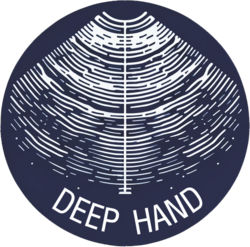Deep Hand
Deep sensing and deep learning for myocontrol of the upper limb

Within the Deep Hand project, self-powered hand prostheses are being developed with the aim of helping amputees regain some lost upper-limb functionalities. Ideally, these should be operated using the activities of the remaining muscles. To achieve this, the Robotics Research Group at the University of Bremen is developing an ultrasound scanning system for detecting deep muscle activities. The acquired ultrasound data will be fused with data from surface electromyography (sEMG), force myography (FMG), and electrical impedance tomography (EIT). Deep learning methods are then used to improve the reliability of prosthetic control.
| Duration: | 16.03.2020 till 31.08.2022 |
| Donee: | University of Bremen |
| Sponsor: | DFG German Research Foundation |
| Grant number: | DFG Project Number 272314643 |
| Partner: |
DLR German Aerospace Center |
| Application Field: | Assistance- and Rehabilitation Systems |
Project details
The world around us is shaped to be operated by hands: our homes, our workplaces, the means of everyday transportation, etc. For this reason, the loss of an upper limb leads to severe impairment in daily living functionality as well as psychological damage. Such a loss is irreversible. Living without a hand or arm irreparably changes the habits, appearance, and affective interactions of the amputee, causing physical disability and often leading to social rejection and depression. The amputee needs a lifelong assistive device, which should become a symbiotic companion to everyday living. With this demand, there is an increased interest in robotic prostheses, which can not only provide dexterous actions but also reliably detect the intentions of the amputee.
Presently, most robotic prosthetic hands are based on surface EMG technology. These signals usually change according to environmental and bodily conditions, which can be disruptive and lead to unreliable control. To read the intent of the amputee more precisely, the DeepHand project aims to introduce various sensing approaches, including detecting surface muscle activities by using sEMG, a tactile sensor, and detecting deep muscle activities by using EIT and ultrasound scanning.
The Robotics Research Group at the University of Bremen will focus on developing a wearable system that detects deep muscle activities by using a phased-array ultrasound sensor. Due to its compact size, the phased-array ultrasound sensor is ideal for detecting muscle activity rather than conventional B-mode scanning, which has proved to be an effective approach to monitoring muscle activity but has a bulky size. The data from the different sensing technologies will be fused and further investigated using machine learning approaches. As a result, the intent of the amputee can be read more precisely, and the corresponding control of the robotic prostheses is more reliable.